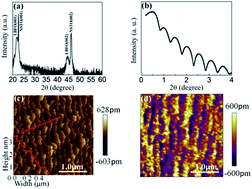High-performance ferroelectric non-volatile memory based on La-doped BiFeO3 thin films
Abstract
An ultrathin (6.2 nm) ferroelectric La0.1Bi0.9FeO3 (LBFO) film was epitaxially grown on a 0.7 wt% Nb-doped SrTiO3 (001) single-crystal substrate by carrying out pulsed laser deposition to form a Pt/La0.1Bi0.9FeO3/Nb-doped SrTiO3 heterostructure. The LBFO film exhibited strong ferroelectricity and a low coercive field. By optimizing the thickness of the LBFO film, a resistance OFF/ON ratio of the Pt/LBFO (∼6.2 nm)/NSTO heterostructure of as large as 2.8 × 105 was achieved. The heterostructure displayed multi-level storage and excellent retention characteristics, and showed stable bipolar resistance switching behavior, which can be well applied to ferroelectric memristors. The resistance switching behavior was shown to be due to the modulating effect of the ferroelectric polarization reversal on the width of the depletion region and the height of the potential barrier of the LaBiFeO3/Nb-doped SrTiO3 interface.

- This article is part of the themed collection: Editors' Collection: Ferroelectric and Multiferroic Materials


 Please wait while we load your content...
Please wait while we load your content...